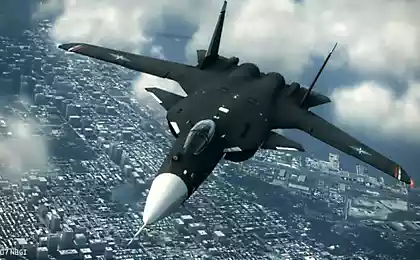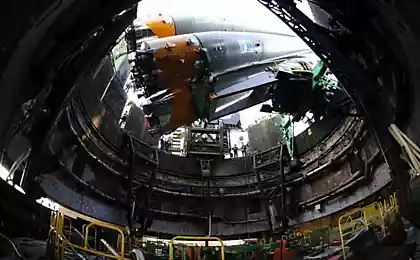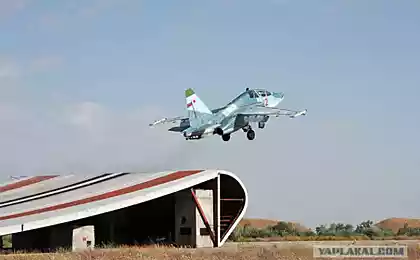2484
COMPLEX "CLUB-K"
First missile system "Club-K" was presented to the Russian design bureau "Innovator" in the Asian exhibition of defense systems, held in April 2009 in Malaysia. In Russia, the "Club-K" was shown to the public in St. Petersburg at the naval show "IMDS-2011." The system is a launcher with four cruise missiles X-35UE and missiles 3M-54KE, 3M-54KE1 and 3M-14KE.
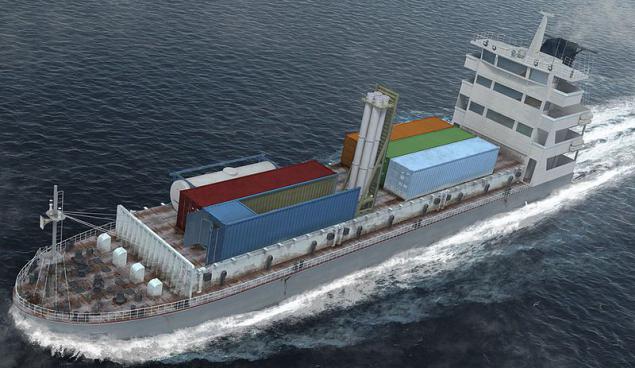
• The complex looks like a standard sea (20 or 40-foot) cargo container used for shipping. Due to such masking note "Club-K" as long as it is not activated, is virtually impossible. Functionally complex "Club-K" consists of Universal Launching Module (ULM), command and control unit (MCU) and power supply module and life support (ES & LSM). Russian missile system developers call "strategic weapon available", each container costs, according to various estimates, about 10 ... 15 million. Dollars.
• Container Missile System "Club-K" has caused panic among Western military experts, because it can completely change the rules of modern warfare. Compact container can be installed on ships, trucks or railroad cars, and because of the excellent camouflage enemy missile system will have to spend much more thorough exploration in planning the attack.
• In fact, the situation is much worse. It is catastrophic. The fact is that in any decent developed country all ports and railway stations just scored a 40-foot containers. These containers are also widely used as a temporary warehouse and for placing bytovok workers as well as to the art - for example, they are mounted, modular fuel oil and gas boilers, diesel power with fluids and so forth.

• Thus, the entire country crowded with dozens and even hundreds of thousands of these containers. Which are contained within the rocket? How is it determined? Civilian vehicles perfectly suited for handling such goods. A huge number of railway platforms, river and sea vessels and even cargo trailers can carry such containers.
• «The Daily Telegraph» argues that if the 2003 Iraq missile systems were "Club-K", the US invasion of the Persian Gulf would be impossible: any civilian cargo ship in the Gulf would represent a potential threat to warships and Georgia. < br /> Pentagon experts are concerned that Russia openly offer "Club-K" to anyone who is under threat of attack by the United States. If this missile system entered service in Venezuela or Iran, is, according to US analysts say could destabilize the world.
• «This system allows for the dissemination of cruise missiles to such an extent, what we have not seen - assesses the potential of the" Club-K "Pentagon consultant on defense Ruben Johnson. - Thanks to careful masking and high mobility, you will not be able to easily identify what the object is used as a launcher. At first your shores appears harmless freighter, and the next minute your military facilities have been destroyed by explosions ».
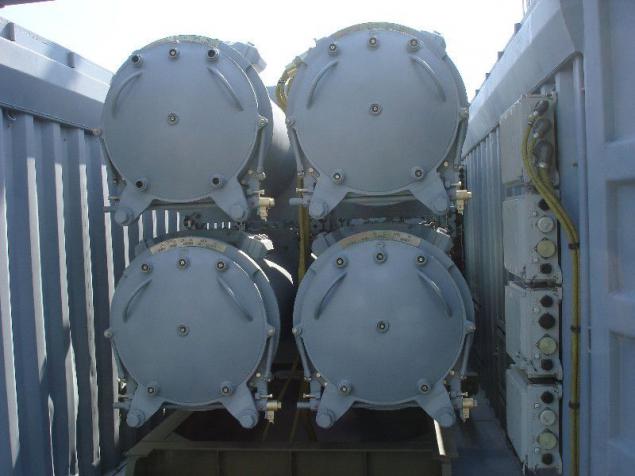
• The main element of the missile system "Club" is a universal missile "Alpha", which was demonstrated in 1993, at an arms fair in Abu Dhabi and the international aerospace show MAKS-93 in Zhukovsky. In the same year she was accepted into service.
• In western classification missile received the designation SS-N-27 Sizzler («shipelka" for the characteristic hissing sound at the start). In Russia and abroad, it is referred to as "Club" (Slub), "Turquoise» (Biryuza) and "Alpha» (Alpha or Alfa). However, it all export names - Russian military, the system is known under the code "Caliber».
• The first foreign customer missile system Club became sea-India. Missiles surface and submarine-installed on frigates of Project 11356 (type «Talwar») and diesel submarines of the Indian Navy project 877EKM built by Russian companies. On previously purchased submarines Club complex is set on them during the renovation and modernization.
• Club missile system is also available and China reached an agreement on the supply of several other countries. Iran and Venezuela have already expressed their interest in the acquisition of new items, reported Sunday Telegraph.
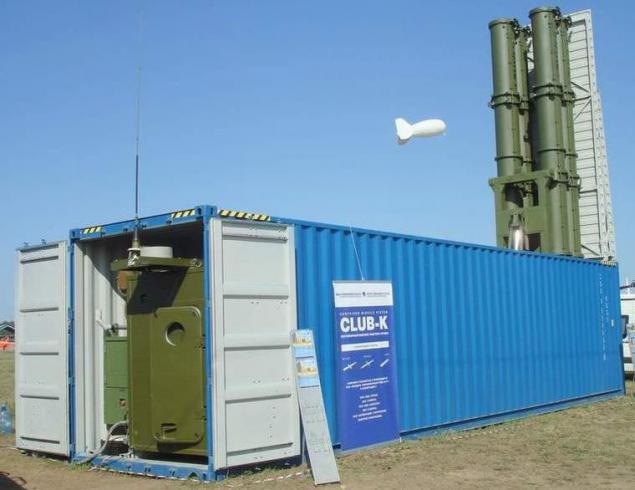
• But still it was a question about the systems' Club »(Club) sea-based - for surface ships and submarines. Now Russian developers made a revolutionary step - put the ship missiles in a standard container and made them stand-alone start. This radically changes the tactics and strategy of the use of missiles.
• Formally missiles "Club-K" do not fall under any restrictions. Their flight range - up to 250-300 km, and they do not even ballistic and cruise. Americans themselves at one time was taken out of the brackets cruise missiles treaty limiting exports of missile technology - now and reap the benefits.
• What scared "Club-K" military experts of the Pentagon? In principle, in combat and technological terms there is nothing Supernova - a set of "shoots" subsonic cruise missiles of various modifications (even subsonic missile 3M54E - only the last 20-30 km it passes the shock of the supersonic 3M to effectively overcome the strong defense and create more kinetic effects on the larger goal). The system allows you to hit the sea and ground targets at a distance of 200-300 km from the point of starting, including aircraft carriers - but no Wunderwaffe itself is not.
• The key is different - the whole complex is made in a standard 20 or 40-foot sea container. This means that it becomes virtually invisible for all types of air and technical intelligence. This is the whole "salt" ideas. The container may be on board a merchant vessel. On a railway platform. It can be loaded on a trailer and as an ordinary cargo delivered to the area of application of the conventional truck. Indeed, they do not remember the rail launchers of ballistic missiles "scalpel" of the USSR!
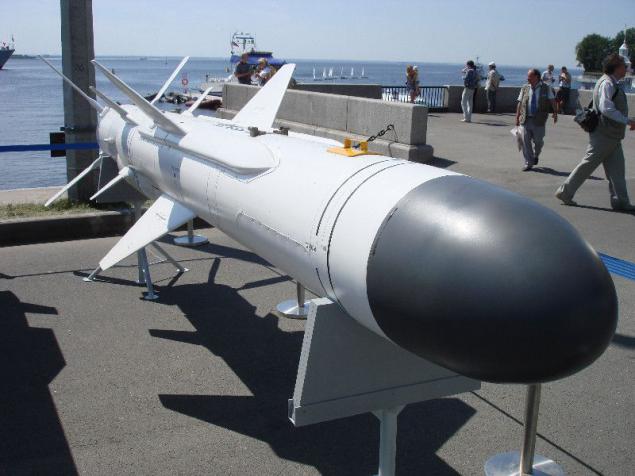
• However, if the destruction of the "reefer" can be explained by the needs of monitoring the launches of ballistic missiles, here on the curve will not approach a goat. Cruise missiles, "a means of coastal defense" - period!
• It goes without saying that the attack in the first place suppressed air defenses, and then spreads to the nines coastal defense. But there is nothing to carry - hundreds, if not thousands, even tens of thousands of false targets (conventional containers that someone aptly named "erythrocytes world trade") simply would not allow any lint or dust.
• This will cause the carriers to stay away from the coast, thus limiting the range of applications with their aircraft - this time. If you came to the landing, some of the containers may be "open" and let amphibious ships to the bottom - that's two. But to hell with them, with the ships - but there is a landing, the main striking force and technology, which quickly irretrievable loss.
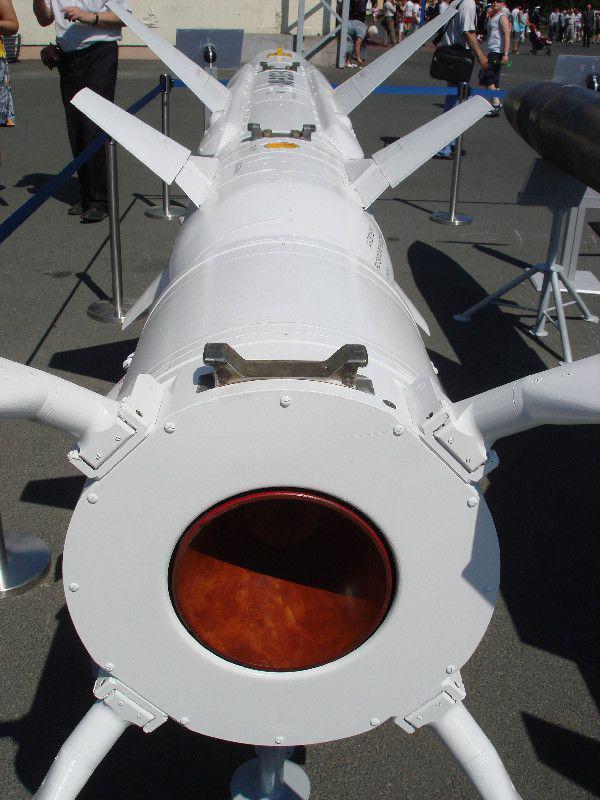
• And the third - it allows you to keep close to the coast more serious defeat funds and reserves. After we drove aircraft carriers and their potential impact on the Beach greatly reduced.
• Of course, it would be nice and coastal air defenses to hide here in such containers. Then just - maritime borders will be shut. And, of course - to trade, sell and trade again these systems. After all, no one is forbidden to defend themselves.
• Now let's see - really so terrible "Club-K", as he is painted? I must say that in the family of "Club" is now one of a few cruise missiles for various purposes, range and power.
• The most powerful of them - antiship cruise 3M-54KE, established on the basis of a rocket "Pomegranate" designed just for strikes on aircraft carriers. Her flight is at a speed of 0, 8 M (0, 8 speed of sound). When approaching the end, it is separated from the main engine and accelerates to Mach 3 - more than 1 km / s - at an altitude of 5-10 m. High, penetrating warhead contains 200 kg of explosive. The range of the missiles - 300 km.
• Cruise ship missiles ZM-54KE and ZM-54KE1 have similar basic configuration. They are made for normal cruise aerodynamic configuration drop-down trapezoidal wing. The main difference of these missiles is the number of stages.
• Launch ZM-54KE has three stages: solid-launch stage sustainer stage liquid-jet engine and a third solid-propellant stages. Launch ZM54KE can be produced from a universal vertical or inclined launchers AP-14NE surface ship torpedo or a staff of 533 mm caliber submarine.
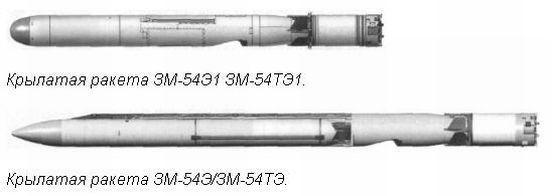
• Start provides the first solid-propellant stages. After the climb rate and the first step is separated, extends ventral air intake, started marching turbojet engine of the second stage and revealed the wing. The height of the missile is reduced to 20 m above sea level, and the rocket flies to the goal of targeting data that is stored by its onboard control system to start.
• midcourse missile has a subsonic flight speed of 180-240 m / B, respectively, greater range. Provides guidance to the target board inertial navigation system. At a distance of 30-40 km from the target missile makes a "hill" with the inclusion of an active radar homing seeker-54E.
• ARGS-54E produces the detection and selection of surface targets (selects the most important) at distances up to 65 km. Guidance in made rocket azimuth sector angle -45 °, and in a vertical plane in the sector from -20 ° to + 10 °. Weight ARGS-54E without housing and fairing no more than 40 kg and a length of 700 mm.
• After the detection and capture target homing missiles at ZM54KE separates the second stage of the subsonic and starts the third stage solid-fuel, developing supersonic speed to 1000 m / s. On the final leg of the flight 20 km missile reduced to a height of 10 m above the water.
• When supersonic missile flight over the crests of waves on final probability of intercept missiles small. However, to completely eliminate the probability of intercepting missiles ZM-54KE air defense targets airborne missile control system can choose the best route out to the target ship. In addition, when attacking large surface targets can be salvo launch of several missiles, which will go to the target from different directions.
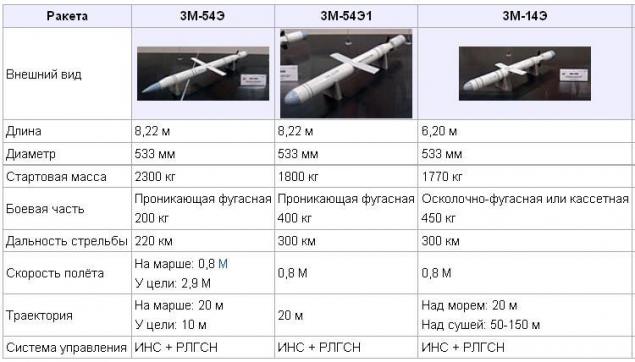
• Subsonic sustainer rocket speed allows you to have a minimum fuel consumption per kilometer, and supersonic speed should provide low vulnerability to anti-aircraft defense near the enemy ship.
• The main difference between a cruise missile ZM-54KE1 from the rocket ZM-54KE - lack of solid-fuel third stage. Thus, the rocket ZM-54KE1 has only subsonic flight regime. Rocket ZM-54KE1 shorter by almost 2 meters than ZM-54KE. This is done in order to be able to mix it on small displacement ships and submarines that have cropped torpedo tubes are manufactured in NATO countries.
• But the rocket ZM-54KE1 has almost twice the warhead (400 kg). ZM-flight rocket 54KE1 is the same as that of the ZM-54KE, but without overclocking the final section.
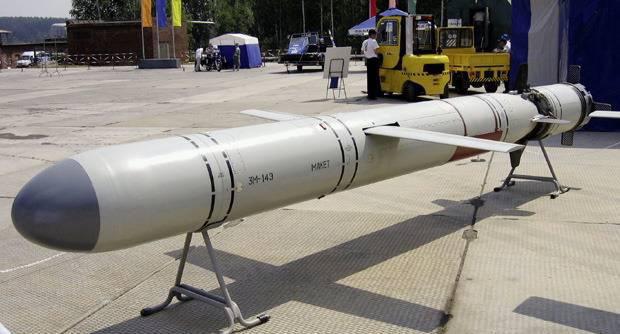
• Cruise missile ZM-14KE on the device and the tactical and technical data is not very different from the rocket ZM-54KE1. The difference is that the rocket ZM14KE designed to destroy ground targets and has a slightly different management system. In particular, its control system includes barovysotomer providing greater stealth flight over land through precise altitude hold mode terrain following, as well as a satellite navigation system that promotes high pointing accuracy.
As for the new cruise missile X-35UE, then we will look at it later in a separate article.
• It should be noted this fact - in the Western media publications bypassed a number of significant technical factors. For example, the "Club-K" is positioned by its manufacturer - JSC "Concern" Morinformsystem-Agat "- as a versatile entry-level module, which houses a launcher with four missiles. But to bring complex "Club-K" in martial status and of launching rockets requires two more of the same 40-foot container, which are command and control module and power supply module and livelihoods.
• These two modules provide:
- Routine maintenance and scheduled missile;
- Reception of targeting and firing commands to perform via satellite;
- Calculation of the initial data of fire;
- Conducting prelaunch;
- Mission defining and launching cruise missiles.
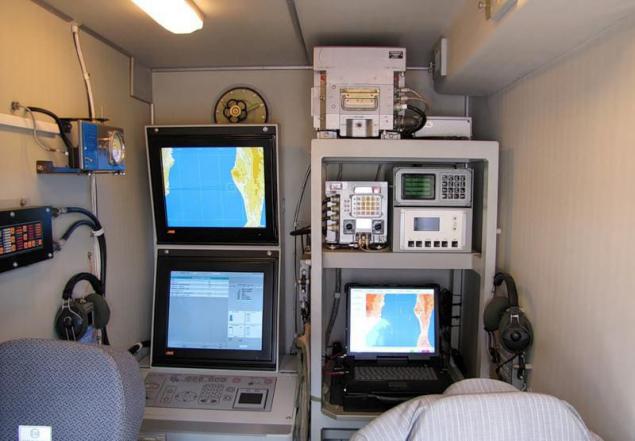
• It is clear that this requires a crew trained, centralized command center, satellite navigation and communications. This is hardly available to terrorists, even if they are of "Hezbollah". His companions they do not have, "Club-K", of course, is tied to the Russian space group and the corresponding control.
• This assignment container complex "Club-K" - weapons mobilized civil courts in a period of threat. In the case of possible aggression coastal state can quickly get a small fleet, designed to combat marine assault group of a potential enemy.
• The same containers located on the coast, it will cover from the approaching landing craft. That is a very effective weapon of defense. It is very cheap - about 15 million. Dollars for a basic package (three containers, 4 missiles). This is an order of magnitude less than the cost of the frigate or corvette, which are commonly used for the defense of the coastline.
• «Club-K" is able to replace the fleet and naval aviation. For poorer countries with a long coastline is a serious alternative to purchasing expensive to operate equipment that is usually acquired in Western Europe. Spanish frigates, German submarines, missiles French, Italian helicopters and other equipment, components for which are made in a half dozen countries, may lose a hefty market sector.
/ On materials warcyb.org.ru, ru.wikipedia.org and i-korotchenko.livejournal.com/
--img11--
Source: swalker.org

• The complex looks like a standard sea (20 or 40-foot) cargo container used for shipping. Due to such masking note "Club-K" as long as it is not activated, is virtually impossible. Functionally complex "Club-K" consists of Universal Launching Module (ULM), command and control unit (MCU) and power supply module and life support (ES & LSM). Russian missile system developers call "strategic weapon available", each container costs, according to various estimates, about 10 ... 15 million. Dollars.
• Container Missile System "Club-K" has caused panic among Western military experts, because it can completely change the rules of modern warfare. Compact container can be installed on ships, trucks or railroad cars, and because of the excellent camouflage enemy missile system will have to spend much more thorough exploration in planning the attack.
• In fact, the situation is much worse. It is catastrophic. The fact is that in any decent developed country all ports and railway stations just scored a 40-foot containers. These containers are also widely used as a temporary warehouse and for placing bytovok workers as well as to the art - for example, they are mounted, modular fuel oil and gas boilers, diesel power with fluids and so forth.

• Thus, the entire country crowded with dozens and even hundreds of thousands of these containers. Which are contained within the rocket? How is it determined? Civilian vehicles perfectly suited for handling such goods. A huge number of railway platforms, river and sea vessels and even cargo trailers can carry such containers.
• «The Daily Telegraph» argues that if the 2003 Iraq missile systems were "Club-K", the US invasion of the Persian Gulf would be impossible: any civilian cargo ship in the Gulf would represent a potential threat to warships and Georgia. < br /> Pentagon experts are concerned that Russia openly offer "Club-K" to anyone who is under threat of attack by the United States. If this missile system entered service in Venezuela or Iran, is, according to US analysts say could destabilize the world.
• «This system allows for the dissemination of cruise missiles to such an extent, what we have not seen - assesses the potential of the" Club-K "Pentagon consultant on defense Ruben Johnson. - Thanks to careful masking and high mobility, you will not be able to easily identify what the object is used as a launcher. At first your shores appears harmless freighter, and the next minute your military facilities have been destroyed by explosions ».

• The main element of the missile system "Club" is a universal missile "Alpha", which was demonstrated in 1993, at an arms fair in Abu Dhabi and the international aerospace show MAKS-93 in Zhukovsky. In the same year she was accepted into service.
• In western classification missile received the designation SS-N-27 Sizzler («shipelka" for the characteristic hissing sound at the start). In Russia and abroad, it is referred to as "Club" (Slub), "Turquoise» (Biryuza) and "Alpha» (Alpha or Alfa). However, it all export names - Russian military, the system is known under the code "Caliber».
• The first foreign customer missile system Club became sea-India. Missiles surface and submarine-installed on frigates of Project 11356 (type «Talwar») and diesel submarines of the Indian Navy project 877EKM built by Russian companies. On previously purchased submarines Club complex is set on them during the renovation and modernization.
• Club missile system is also available and China reached an agreement on the supply of several other countries. Iran and Venezuela have already expressed their interest in the acquisition of new items, reported Sunday Telegraph.

• But still it was a question about the systems' Club »(Club) sea-based - for surface ships and submarines. Now Russian developers made a revolutionary step - put the ship missiles in a standard container and made them stand-alone start. This radically changes the tactics and strategy of the use of missiles.
• Formally missiles "Club-K" do not fall under any restrictions. Their flight range - up to 250-300 km, and they do not even ballistic and cruise. Americans themselves at one time was taken out of the brackets cruise missiles treaty limiting exports of missile technology - now and reap the benefits.
• What scared "Club-K" military experts of the Pentagon? In principle, in combat and technological terms there is nothing Supernova - a set of "shoots" subsonic cruise missiles of various modifications (even subsonic missile 3M54E - only the last 20-30 km it passes the shock of the supersonic 3M to effectively overcome the strong defense and create more kinetic effects on the larger goal). The system allows you to hit the sea and ground targets at a distance of 200-300 km from the point of starting, including aircraft carriers - but no Wunderwaffe itself is not.
• The key is different - the whole complex is made in a standard 20 or 40-foot sea container. This means that it becomes virtually invisible for all types of air and technical intelligence. This is the whole "salt" ideas. The container may be on board a merchant vessel. On a railway platform. It can be loaded on a trailer and as an ordinary cargo delivered to the area of application of the conventional truck. Indeed, they do not remember the rail launchers of ballistic missiles "scalpel" of the USSR!

• However, if the destruction of the "reefer" can be explained by the needs of monitoring the launches of ballistic missiles, here on the curve will not approach a goat. Cruise missiles, "a means of coastal defense" - period!
• It goes without saying that the attack in the first place suppressed air defenses, and then spreads to the nines coastal defense. But there is nothing to carry - hundreds, if not thousands, even tens of thousands of false targets (conventional containers that someone aptly named "erythrocytes world trade") simply would not allow any lint or dust.
• This will cause the carriers to stay away from the coast, thus limiting the range of applications with their aircraft - this time. If you came to the landing, some of the containers may be "open" and let amphibious ships to the bottom - that's two. But to hell with them, with the ships - but there is a landing, the main striking force and technology, which quickly irretrievable loss.

• And the third - it allows you to keep close to the coast more serious defeat funds and reserves. After we drove aircraft carriers and their potential impact on the Beach greatly reduced.
• Of course, it would be nice and coastal air defenses to hide here in such containers. Then just - maritime borders will be shut. And, of course - to trade, sell and trade again these systems. After all, no one is forbidden to defend themselves.
• Now let's see - really so terrible "Club-K", as he is painted? I must say that in the family of "Club" is now one of a few cruise missiles for various purposes, range and power.
• The most powerful of them - antiship cruise 3M-54KE, established on the basis of a rocket "Pomegranate" designed just for strikes on aircraft carriers. Her flight is at a speed of 0, 8 M (0, 8 speed of sound). When approaching the end, it is separated from the main engine and accelerates to Mach 3 - more than 1 km / s - at an altitude of 5-10 m. High, penetrating warhead contains 200 kg of explosive. The range of the missiles - 300 km.
• Cruise ship missiles ZM-54KE and ZM-54KE1 have similar basic configuration. They are made for normal cruise aerodynamic configuration drop-down trapezoidal wing. The main difference of these missiles is the number of stages.
• Launch ZM-54KE has three stages: solid-launch stage sustainer stage liquid-jet engine and a third solid-propellant stages. Launch ZM54KE can be produced from a universal vertical or inclined launchers AP-14NE surface ship torpedo or a staff of 533 mm caliber submarine.

• Start provides the first solid-propellant stages. After the climb rate and the first step is separated, extends ventral air intake, started marching turbojet engine of the second stage and revealed the wing. The height of the missile is reduced to 20 m above sea level, and the rocket flies to the goal of targeting data that is stored by its onboard control system to start.
• midcourse missile has a subsonic flight speed of 180-240 m / B, respectively, greater range. Provides guidance to the target board inertial navigation system. At a distance of 30-40 km from the target missile makes a "hill" with the inclusion of an active radar homing seeker-54E.
• ARGS-54E produces the detection and selection of surface targets (selects the most important) at distances up to 65 km. Guidance in made rocket azimuth sector angle -45 °, and in a vertical plane in the sector from -20 ° to + 10 °. Weight ARGS-54E without housing and fairing no more than 40 kg and a length of 700 mm.
• After the detection and capture target homing missiles at ZM54KE separates the second stage of the subsonic and starts the third stage solid-fuel, developing supersonic speed to 1000 m / s. On the final leg of the flight 20 km missile reduced to a height of 10 m above the water.
• When supersonic missile flight over the crests of waves on final probability of intercept missiles small. However, to completely eliminate the probability of intercepting missiles ZM-54KE air defense targets airborne missile control system can choose the best route out to the target ship. In addition, when attacking large surface targets can be salvo launch of several missiles, which will go to the target from different directions.

• Subsonic sustainer rocket speed allows you to have a minimum fuel consumption per kilometer, and supersonic speed should provide low vulnerability to anti-aircraft defense near the enemy ship.
• The main difference between a cruise missile ZM-54KE1 from the rocket ZM-54KE - lack of solid-fuel third stage. Thus, the rocket ZM-54KE1 has only subsonic flight regime. Rocket ZM-54KE1 shorter by almost 2 meters than ZM-54KE. This is done in order to be able to mix it on small displacement ships and submarines that have cropped torpedo tubes are manufactured in NATO countries.
• But the rocket ZM-54KE1 has almost twice the warhead (400 kg). ZM-flight rocket 54KE1 is the same as that of the ZM-54KE, but without overclocking the final section.

• Cruise missile ZM-14KE on the device and the tactical and technical data is not very different from the rocket ZM-54KE1. The difference is that the rocket ZM14KE designed to destroy ground targets and has a slightly different management system. In particular, its control system includes barovysotomer providing greater stealth flight over land through precise altitude hold mode terrain following, as well as a satellite navigation system that promotes high pointing accuracy.
As for the new cruise missile X-35UE, then we will look at it later in a separate article.
• It should be noted this fact - in the Western media publications bypassed a number of significant technical factors. For example, the "Club-K" is positioned by its manufacturer - JSC "Concern" Morinformsystem-Agat "- as a versatile entry-level module, which houses a launcher with four missiles. But to bring complex "Club-K" in martial status and of launching rockets requires two more of the same 40-foot container, which are command and control module and power supply module and livelihoods.
• These two modules provide:
- Routine maintenance and scheduled missile;
- Reception of targeting and firing commands to perform via satellite;
- Calculation of the initial data of fire;
- Conducting prelaunch;
- Mission defining and launching cruise missiles.

• It is clear that this requires a crew trained, centralized command center, satellite navigation and communications. This is hardly available to terrorists, even if they are of "Hezbollah". His companions they do not have, "Club-K", of course, is tied to the Russian space group and the corresponding control.
• This assignment container complex "Club-K" - weapons mobilized civil courts in a period of threat. In the case of possible aggression coastal state can quickly get a small fleet, designed to combat marine assault group of a potential enemy.
• The same containers located on the coast, it will cover from the approaching landing craft. That is a very effective weapon of defense. It is very cheap - about 15 million. Dollars for a basic package (three containers, 4 missiles). This is an order of magnitude less than the cost of the frigate or corvette, which are commonly used for the defense of the coastline.
• «Club-K" is able to replace the fleet and naval aviation. For poorer countries with a long coastline is a serious alternative to purchasing expensive to operate equipment that is usually acquired in Western Europe. Spanish frigates, German submarines, missiles French, Italian helicopters and other equipment, components for which are made in a half dozen countries, may lose a hefty market sector.
/ On materials warcyb.org.ru, ru.wikipedia.org and i-korotchenko.livejournal.com/
--img11--
Source: swalker.org









